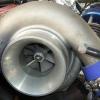What is the difference in performance between plumb back and atmospheric valves?
Announcements
-
Similar Content
-
Latest Posts
-
Which is a thing done by no-one ever. Not even remotely a good idea. I would run an engine with 10:1 these days. Good management and fuel compared to the early 90s when these boat motors were designed & built.
-
I think you misunderstand. This was Greg driving from Melb to Syd (or return) at a constant 100km/h on the highway. Very little throttle movement, very little accel/decel. You should be able to get 8.5 l/100km under those circumstances (which is effectively what he reports - 50L for 600km is 8.3 l/100km). I drive my car to & from work every day, in traffic, on a mixture of 50, 60, 90 km/h roads (and therefore at up to 110km/h!!) with traffic lights and freeway sections. 28 km each way, so about a 30-40 minute drive depending on day, direction and traffic (which is enough for the majority of the drive to be "fully warmed up". I typically get flat 10 l/100km every single week. OK, maybe 10-10.5, every single tank of fuel. RB25DET Neo. It is easy to get acceptable economy. I won't say "good" economy, because modern cars are doing 5-6 l/100km in the same conditions.
-
Superpro are fine. There are some applications (R32 FUCAs for example) where they are no damn good, but typically for any normal suspension bush, they are fine. Some people will complain of them making noise. Some people will complain of them collapsing. But many of those can probably be traced back to not properly lubing at install or other installation problems, or possibly other problems elsewhere in the suspension that put additional load into particular bush. And for the legit complaints? Meh. Deal with it. I had to replace the poly bushes in my R32 FUCAs every year. The real issue is that I am sold on the idea of adjustability of at least upper arms. So I only have spots for poly bushes in lower arms these days, as everything else is either hardened rubber or spherical steel.
-
Suspension really is complicated.... All these considerations are making me over think it all. Again. I reckon I'll wait for SK's response on his coilovers, and go from there. Though if I go MCA, I'll have to decide on whether the extra $600 (voston comforts $1890, mca pro comfort is $2490) is worth it. Just something soft and comfy, yet firm enough when required at the track or a casual old pac drive for a pie... Otherwise, anyone have experience with SuperPro bushings? Needing to replace the bushings on the suspension department... Will probably keep the oem uppercontrol arms etc, and just replace the bushings.
-
yes you are right, indeed it is for information only. there is not much difference being at 9 or 9.5 or 10. but when I see that you have to plane the block by 2mm if you have taken (example) CP piston which means that you end up with an 8.2 with the rb26 cylinder head. hence the question I ask is what would be best to achieve what he is asking me. take pistons in 9.0 or 10.0 to avoid planing a famous 2mm on the block knowing that I worked on the dome of the cylinder head which became total hemispherical
-





Recommended Posts
Create an account or sign in to comment
You need to be a member in order to leave a comment
Create an account
Sign up for a new account in our community. It's easy!
Register a new accountSign in
Already have an account? Sign in here.
Sign In Now